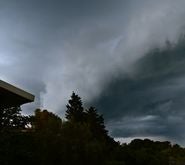Many (re)insurers may be taken aback by the level of claims arising from floods in the French Riviera on October 3, 2015. The reason? A large proportion of the affected homes and businesses they insure in the area are nowhere near a river or floodplain, so many models failed to identify the possibility of their inundation by rainfall and flash floods.
Effective flood modeling must begin with precipitation (rain/snowfall), since river-gauge-based modeling of inland flood risk lacks the ability to cope with extreme peaks of precipitation intensity. Further, a credible flood model must incorporate risk factors as well as the hazard: the nature of the ground, such as its saturation level due to antecedent conditions, and the extent of flood defenses. Failing to provide such critical factor can cause risk to be dramatically miscalculated.
A not so sunny Côte d’Azur
This was clearly apparent to the RMS event reconnaissance team who visited the affected areas of southern France immediately after the floods.
“High-water marks for fluvial flooding from the rivers Brague and Riou de l’Argentiere were at levels over two meters, but flash floodwaters reached heights in excess of one meter in areas well away from the rivers and their floodplains,” reported the team.
This caused significant damage to many more ground-floor properties than would have been expected, including structural damage to foundations and scouring caused by fast-floating debris. Damage to vehicles parked in underground carparks was extensive, as many filled with rainwater. Vehicles struck by more than 0.5 meters of water were written off, all as a result of an event that was not modeled by many insurers.
The Nice floods show clearly how European flood modeling must be taken to a new level. It is essential that modelers capture the entire temporal precipitation process that leads to floods. Antecedent conditions—primarily the capacity of the soil to absorb water must be considered, since a little additional rainfall may trigger saturation, causing “saturation excess overland flow” (or runoff). This in turn can lead to losses such as those assessed by our event reconnaissance team in Nice.
Our modeling team believes that to achieve this new level of understanding, models must be based on continuous hydrological simulations, with a fine time-step discretization; the models must simulate the intensity of rainfall over time and place, at a high level of granularity. We’ve been able to see that models that are not based on continuous precipitation modeling could miss up to 50% of losses that would occur off flood plains, leading to serious underestimation of technical pricing for primary and reinsurance contracts.
What’s in a model?
When building a flood model, starting from precipitation is fundamental to the reproduction, and therefore the modeling, of realistic spatial correlation patterns between river basins, cities, and other areas of concentrated risks, which are driven by positive relationships between precipitation fields. Such modeling of rainfall may also identify the potential for damage from fluvial events.
But credible defenses must also be included in the model. The small, poorly defended river Brague burst its banks due to rainfall, demolishing small structures in the town of Biot. Only a rainfall-based model that considers established defenses can capture this type of damage.
Simulated precipitation forms the foundation of RMS inland flood models, which enables representation of both fluvial and pluvial flood risk. Since flood losses are often driven by events outside major river flood plains, such an approach, coupled with an advanced defense model, is the only way to garner a satisfactory view of risk. Visits by our event reconnaissance teams further allow RMS to integrate the latest flood data into models, for example as point validation for hazard and vulnerability.
Sluggish growth in European insurance markets presents a challenge for many (re)insurers. Broad underwriting of flood risk presents an opportunity, but demands appropriate modeling solutions. RMS flood products provide just that, by ensuring that the potential for significant loss is well understood, and managed appropriately.






